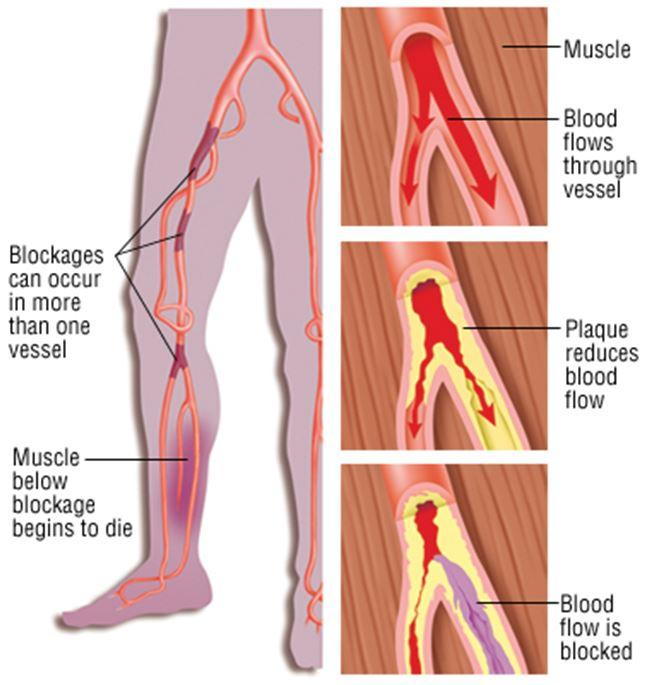Peripheral Arterial Disease
- posted: Feb. 07, 2020
PERIPHERAL VASCULAR DISEASE
What is peripheral artery disease? Also known as PAD, it develops when arteries carrying blood to the legs, stomach, arms and head – but mostly the legs – become narrowed because of plaque building on the arterial walls. “Peripheral” refers to the outer regions of the body, like the arms and legs versus “Central” meaning the trunk/core body.
PAD often goes undiagnosed, with its symptoms mistaken for other health conditions. People who have PAD have a higher risk of coronary artery disease, heart attack or stroke. Patients with Diabetes are prone to developing PAD. As a Diabetic it’s important to have your feet checked regularly at home AND with a podiatrist. Other risk factors include uncontrolled high blood pressure, high cholesterol, and weight gain. Stop smoking is one of the most preventable solutions to developing PAD.
When you look at your feet(without socks) here’s what to look for:
· Leg or foot wounds that are slow to heal
· Unexplained night pain with feet or legs
· Unexplained leg pain or cramping, especially while walking or exercising
· Skin problems or discoloration on the legs and feet
· Poor toenail growth or poor hair growth on the legs
Whether you’ve been diagnosed with Peripheral Arterial Disease (PAD) or not, it’s still important to have questionable feet checked. Please give us a call (919) 557-0300.






